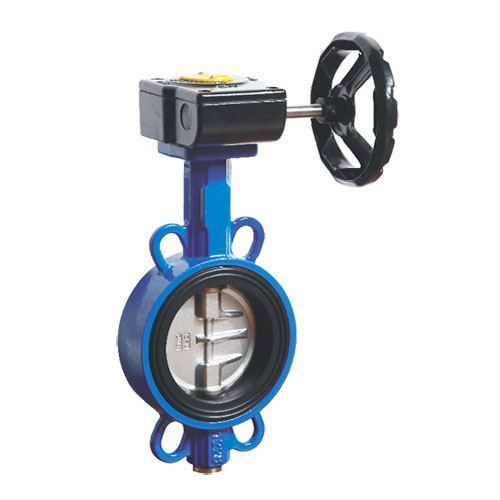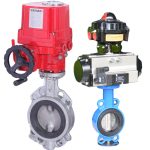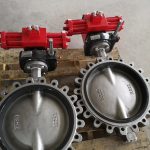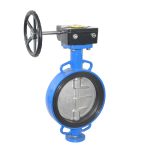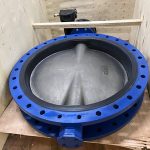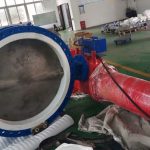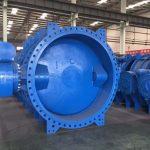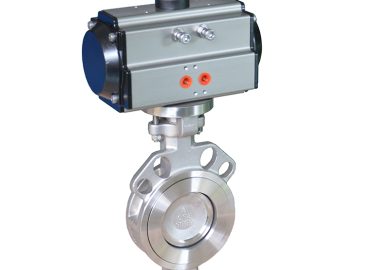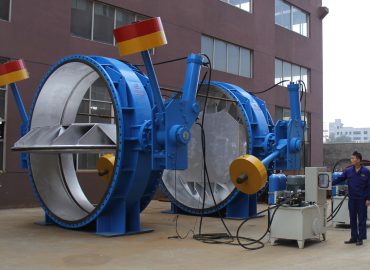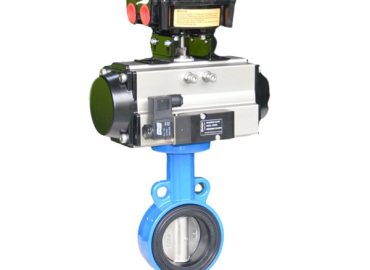Marine butterfly valves are essential components in a variety of marine applications such as shipbuilding, offshore drilling platforms, and naval vessels. These valves are designed to regulate fluid flow, particularly in marine environments that are harsh and corrosive. Choosing the right materials for a marine butterfly valve is crucial to ensure its longevity and performance. In this article, we will explore the types of materials that are best suited for a marine butterfly valve operating at 10k, highlighting their specific characteristics and advantages.
Introduction
When it comes to selecting materials for a sea water butterfly valves operating at 10k, there are several factors to consider. The materials must be able to withstand the harsh conditions of a marine environment, including exposure to saltwater, high pressures, and extreme temperatures. Materials such as duplex and super duplex stainless steel, bronze, and high-nickel alloys are often preferred for their high resistance to corrosion and erosion, excellent mechanical properties, and durability. These materials also offer excellent strength-to-weight ratios, making them ideal for marine applications where weight and space are critical factors. Additionally, some materials like bronze have excellent resistance to biofouling, a common issue in marine environments, making them an ideal choice for valves used in seawater applications.
Definition of Marine Butterfly Valve 10K
A marine butterfly valve 10K is a type of valve widely used in marine industries such as shipbuilding, offshore drilling, and naval vessels to regulate and control fluid flow. This valve is known for its compact design, light weight, and ease of operation, making it a popular choice for marine applications where space and weight are at a premium. The 10K in the name refers to the pressure rating in kilopascals (KPa) and indicates the maximum pressure the valve can withstand before failing. The marine butterfly valve 10K is typically designed for use in harsh marine environments that are corrosive and require a high degree of reliability and durability.
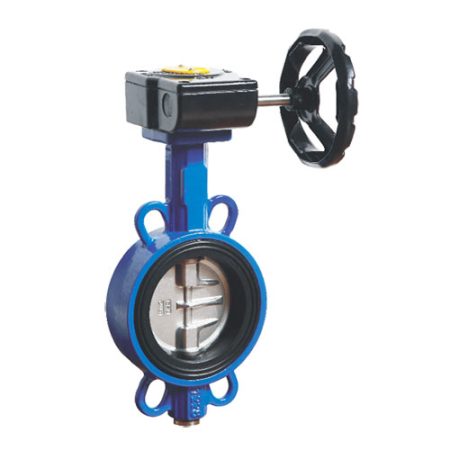
Types of Materials Suited for Marine Butterfly Valves 10K
Marine wafer butterfly valves 10K are crucial components in many marine applications, and their materials determine their resistance to harsh marine environments, particularly in corrosive applications that require reliable and durable seals. Marine butterfly valves 10K must operate under adverse conditions such as high water pressure, seawater corrosivity, and high temperatures, among others. The valves’ mechanical integrity should withstand the operational parameters and not leak, which can cause significant damage to equipment and the environment.
The most widely used material for marine lug butterfly valves 10K is duplex stainless steel. This material possesses excellent corrosion resistance and is resistant to stress corrosion cracking, erosion corrosion, and fatigue corrosion. It has better mechanical properties than some other alloys, such as high yield and tensile strength, good ductility, and toughness. It is also easy to manufacture, has a high melting point, and exhibits low thermal expansion, making it ideal for butterfly valves used in seawater applications.
Another common material used to make marine butterfly valves 10K is bronze. This copper alloy is known for its excellent corrosion resistance, even in seawater. It is also resistant to biofouling, which is a common issue in a marine environment where marine organisms grow on surfaces, leading to reduced efficiency and damage. Bronze has good mechanical strength, is easy to cast and machine, and is easily weldable. It also has excellent resistance to cavitation erosion and low friction, making it ideal for use in valves.
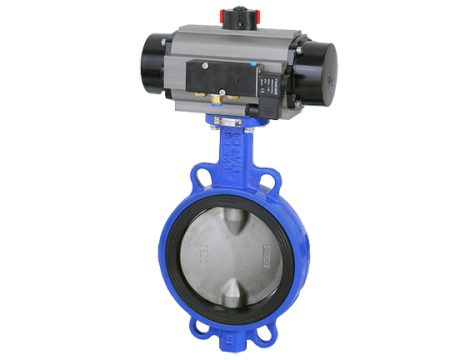
In addition to duplex stainless steel and bronze, other materials that can be used for marine butterfly valves 10K include super duplex stainless steel, high-nickel alloys such as Alloy C-276, and titanium. Super duplex stainless steel is engineered to possess better corrosion resistance than duplex stainless steel and has higher tensile and yield strength. High-nickel alloys like Alloy C-276 provide exceptional resistance to corrosion and are ideal for harsh environments with high temperatures and pressures. Additionally, titanium is lightweight, corrosion-resistant, and strong, making it an ideal material for butterfly valves used in the marine industry.
In conclusion, selecting the right material for marine butterfly valves 10K is essential for optimum performance and reliability. The selected material should provide resistance to corrosion, erosion, and longevity in harsh marine environments. They should also offer excellent mechanical characteristics such as high strength and toughness, be easy to manufacture and weld, and be resistant to biofouling. By considering these factors when selecting materials, engineers can ensure that the butterfly valve will perform optimally and achieve maximum efficiency, reliability, and sustainability.
Stainless Steel
Stainless steel is a type of alloy containing at least 10.5% chromium to provide corrosion resistance, making it a popular choice for various applications requiring high durability, strength, and resistance to corrosion. Stainless steel also has a high melting point, excellent mechanical properties, and is highly resistant to wear and tear. Different grades of stainless steel contain varying amounts of other metals, such as nickel and molybdenum, to enhance specific properties such as heat resistance, overall strength, and weldability. Stainless steel is easy to clean and maintain, making it ideal for applications where hygiene and cleanliness are critical. It is used in various industries, including aerospace, marine, automotive, and medical, among others.
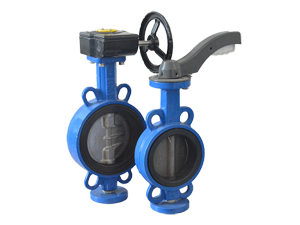
Bronze
Bronze butterfly valve is a copper alloy that contains varying amounts of other elements such as tin, aluminum, and silicon. The properties of bronze depend on the specific ratio of copper and alloying elements used. Bronze is known for its excellent corrosion resistance, even in seawater, making it a popular choice for marine applications. In addition to corrosion resistance, bronze also has good mechanical properties, including high tensile strength, ductility, and toughness. Furthermore, bronze has high thermal conductivity, low friction, and excellent resistance to wear and tear, making it an excellent choice for components that operate under high stress conditions. Bronze alloys are also easily cast, machined, welded, and soldered, making them a versatile option for a wide range of applications in various industries, including marine, aerospace, and construction.
Aluminum Alloy
Aluminum alloys are widely used in various industries such as aerospace, automotive, and marine due to their high strength-to-weight ratio, corrosion resistance, and ease of fabrication. Aluminum has excellent thermal and electrical conductivity, making it an ideal material for heat exchangers, electrical components, and other applications that require efficient heat dissipation. Aluminum alloys also have good formability, weldability, and machinability, allowing them to be molded into various shapes and sizes. The addition of other elements such as copper, zinc, magnesium, and silicon enhances its properties such as tensile strength, toughness, and resistance to wear and tear. Marine-grade aluminum alloys are specifically designed for marine environments and have enhanced corrosion resistance, making them better suited for marine applications such as ships, boats, and offshore drilling platforms.
Benefits of Using Materials Suitable for Marine Butterfly Valves 10K
Using materials suitable for marine butterfly valves 10K offers numerous benefits. In harsh marine environments, corrosive properties can cause significant operational equipment failure, leading to costly repairs or replacements. Choosing the right material can help reduce equipment failure, downtime, and overall cost. Stainless steel alloys such as duplex and super duplex offer excellent corrosion resistance and mechanical strength, allowing for durable and reliable valve operation. Bronze is another option that possesses excellent corrosion resistance and resistance to biofouling. High-nickel alloys such as Alloy C-276 provide exceptional resistance to corrosion, making them ideal for harsh environments with high temperatures and pressures. Additionally, titanium is lightweight, strong, and corrosion-resistant, making it ideal for butterfly valves used in the marine industry.
Using materials appropriate for marine butterfly valves 10K also ensures that the valves can withstand the extreme conditions, high stresses, and high operating temperatures that are typical in marine environments. These valves must be in operation under adverse conditions such as high water pressure, seawater corrosivity, and high temperatures, and the chosen material should withstand these conditions without cracking or leaking. The right materials can also help minimize the need for maintenance and calibration to keep the valve running efficiently.
By choosing materials suited for marine butterfly valves 10K, valves can operate optimally with reduced downtime, lower risk of environmental pollution, and longer life. This minimizes replacement costs and ensures the overall longevity and efficiency of the valve, allowing for more extended and reliable service life, reducing overall environmental impact, and minimizing cost. In addition, with the use of the right material, valve manufacturers can meet standard regulatory requirements, along with the specific requirements of various marine applications, ensuring that all aspects of marine applications are optimal and well-represented.
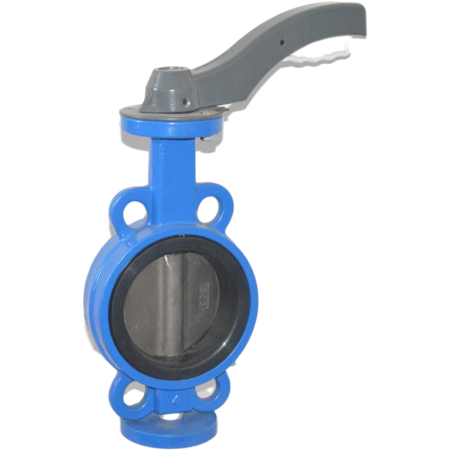
Corrosion and Temperature Resistant
Corrosion and temperature-resistant materials are essential for many industries, particularly those that operate in harsh environments such as marine, aerospace, and oil and gas industries. These materials can withstand elevated temperatures and chemically aggressive environments, ensuring the longevity of the equipment and minimizing the risk of catastrophic failure or environmental pollution. Some corrosion and temperature-resistant materials include super alloys, ceramics, and composites, which offer exceptional resistance to corrosion and high-temperature oxidation. The use of these materials can reduce equipment downtime, maintenance, and replacement costs. Additionally, they enable equipment to operate reliably under extreme environmental conditions and perform optimally, leading to increased efficiency and productivity. The development of advanced corrosion and temperature-resistant materials allows industries to reduce their environmental impact, increase safety, and maintain compliance with regulatory requirements.
Durability and Longevity
Durability and longevity are critical factors to consider when selecting materials for various applications. Durable and long-lasting materials can withstand regular wear and tear, environmental factors, and often require less maintenance and repair. Durability is the ability of a material to withstand the stresses and impacts of its intended use without breaking, cracking, or warping. Longevity, on the other hand, refers to a material’s ability to last for an extended period without significant deterioration or failure. Choosing durable and long-lasting materials can significantly reduce the need for frequent replacements or repair, saving time and money in the long run. Additionally, durable materials provide better reliability and safety, allowing for more efficient equipment performance and minimizing the risk of catastrophic events.
Low Maintenance Requirements
Low maintenance requirements are essential for many applications, particularly those that operate in harsh or remote environments. Low-maintenance requirements mean that the equipment can operate efficiently while requiring minimal upkeep or repair. Choosing materials that require low maintenance can significantly reduce the cost and time associated with maintaining or repairing equipment. Additionally, low-maintenance materials help ensure that the equipment remains in good working condition for extended periods, reducing the risk of downtime, and enhancing productivity. Moreover, low-maintenance requirements are also crucial in hazardous environments where regular and planned maintenance may not be feasible, such as offshore oil rigs or remote mining sites. Advanced materials that require minimal maintenance such as self-cleaning coatings, or those with resistance to bio-fouling, are becoming increasingly prevalent in many industries, further reducing the need for regular inspections and cleaning.
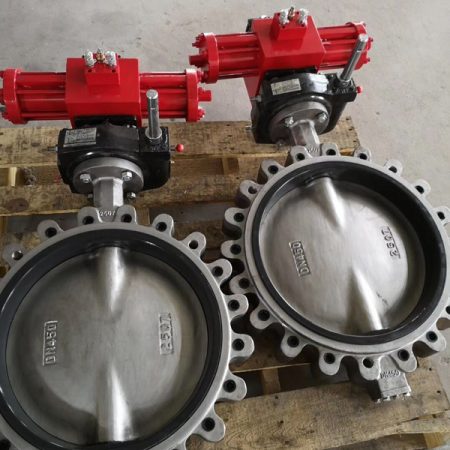
Conclusion
In conclusion, choosing the right materials for marine butterfly valves 10K is crucial for optimal performance, durability, and longevity. Materials such as duplex and super duplex stainless steel, bronze, high-nickel alloys like Alloy C-276, and titanium offer high resistance to corrosion and erosion, excellent mechanical strength, and durability. These materials are ideal for harsh marine environments that require reliable and robust seals that can withstand high water pressure, seawater corrosivity, and extreme temperatures. The right material can also help minimize maintenance, calibration and reduce equipment downtime leading to increased productivity and efficiency.
Furthermore, using corrosive and temperature-resistant materials such as super alloys, ceramics, and composites can help minimize the risk of catastrophic failure or environmental pollution, particularly in industries such as marine, aerospace, and oil and gas. These materials offer exceptional resistance to corrosion and high-temperature oxidation. Additionally, selecting long-lasting and low maintenance materials can help reduce equipment downtime, maintenance, and repair costs.
In summary, choosing the appropriate material for marine butterfly valves 10K is a critical decision that can determine equipment’s longevity and performance. The selected material should withstand harsh and corrosive environments, high stress, and high operating temperatures, and offer excellent mechanical properties such as high strength, toughness, and durability. By selecting these materials, businesses can achieve maximum efficiency, reliability, and sustainability, leading to reduced costs, minimized environmental impact, and increased productivity.


